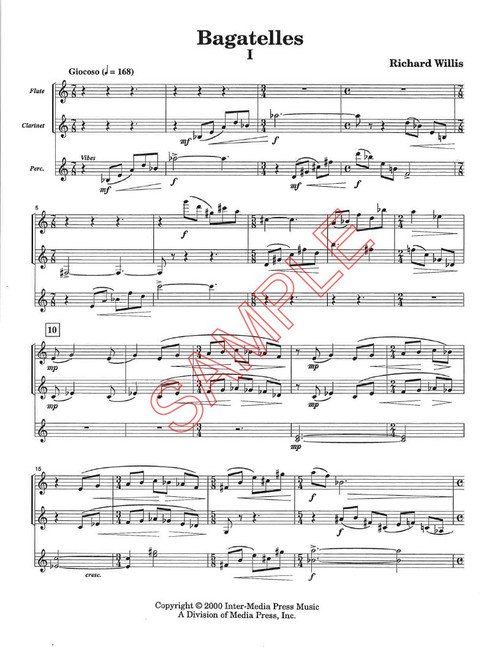Sources III, for clarinet and percussion, includes two scores.
Want it now? Click here to purchase a digital copy of this product.
Review from Percussive Notes (2021):
Sources III
David Burge
The use of lighting in music is not new, but there is something novel about the low-tech lighting of a concert hall with candlelight. “Sources III” is an unconventional work for clarinet and percussion that at times feels very familiar, but with a twist. This work uses ten strategically placed candles to light the entire concert hall, each of which is extinguished by the end of the piece. The musical ideas and instrumentation of “Sources III” feel commonplace within the contemporary mixed chamber repertoire. However, where this piece stands out is the use of candlelight. This is especially striking given the abundance of technology in the 21st century where even our phones have replaced lighters at outdoor music events.
Throughout this work the audience is immersed for nearly 20 minutes in a subtle tension between the B-flat clarinet, which must trans- pose from the score, and the lone percussionists, who must dexterously maneuver through a large instrumentation that ranges from obscure eight lujon with different tones to the common vibraphone. While the contemporary texture of intricate rhythmic exchanges is pervasive, the manipulation of candlelight, paired with the strategic placement of contrasting musical vignettes, allow this piece to stand out as unique within the repertoire.
It should be noted that both performers are asked to move throughout the performance space. The clarinetist is the most mobile, being directed to play from three different music stands placed throughout the stage and audience; by contrast, the percussionist is directed to navigate to a single upstage tam-tam that is not illuminated by a candle. In addition to moving throughout the performance space, the clarinetist is occasionally asked to perform some manageable percussion parts.
“Sources III” comes with two oversized performance scores that look like copies from a hand-written original. As a performer and educator, mixed chamber music can be tricky to work into the curriculum or recital, but with more pieces arise more opportunity for collaboration. I recommend this singular work by David Burge and believe it would work well on a graduate or professional recital.
—Quintin Mallette








